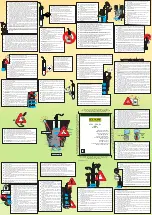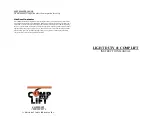
Appendix E
Optimizing Your Transfer Rates
©
National Instruments Corporation
E-3
Interpreting Benchmark Results
Use benchmark results to get a general idea of what transfer rates to expect
for an application. Since these results are system dependent, they are not to
be used as specifications. View the latest results on our Web site,
ni.com
.
Benchmark results are in megasamples per second (MS/s) for sample sizes
of one, two, and four bytes. For example, if you are performing an eight-bit
operation, then sample size is one byte. Sixteen bits is two bytes and 32 bits
is four bytes.
To convert from MS/s to MB/s, use the following formula:
where
sample size
can be one, two, or four bytes.
For example, 10 MS/s, where each sample is 16 bits (two bytes):
The following applications were tested:
•
Finite (pattern I/O and burst protocol)—One buffer of data is
transferred one time.
Table E-2.
Devices That Support Direct-Memory Access (DMA) Transfers
Device
Direct-Memory Access
NI AT-DIO-32HS
Supported if system DMA resources available. If you use two DMA
channels, data transfer is faster.
NI DAQCard-6533
for PCMCIA
Not supported
NI PCI-DIO-32HS
NI PCI-6534
Supported
NI PXI-6533
NI PXI-6534
Supported if device is in a peripheral slot that allows bus arbitration
(bus mastering). Otherwise, use software to select interrupt-driven
transfers. PXI chassis have bus arbitration for all slots.
MS
s
--------
sample size (B)
1
S
-------------------------------------
×
MB
s
--------
=
10MS
s
--------------
2 bytes
1S
----------------
×
20MB
s
---------------
=
















































